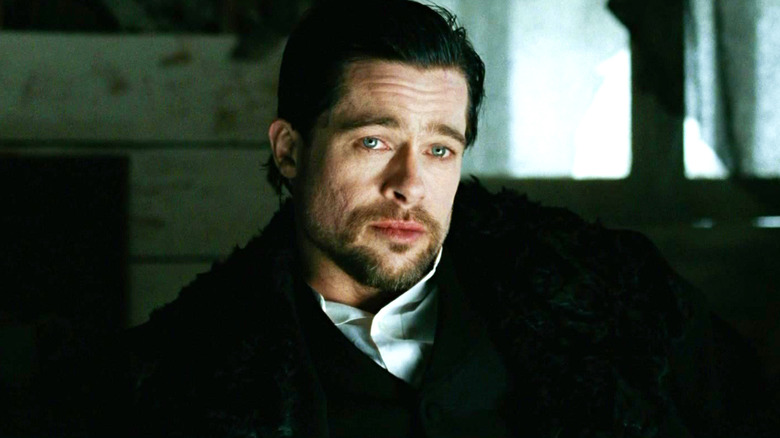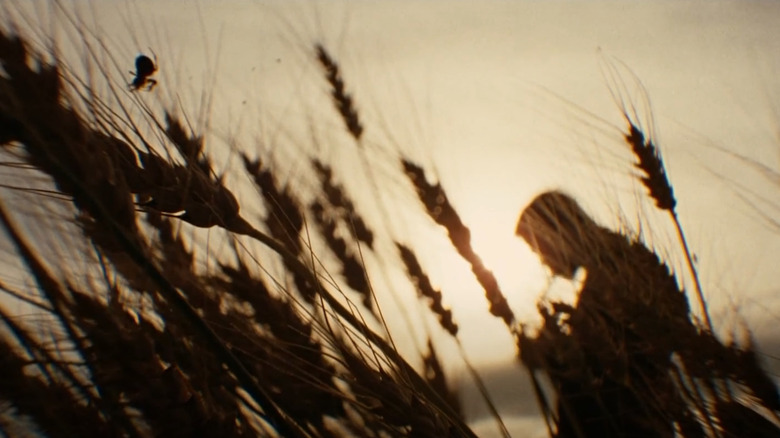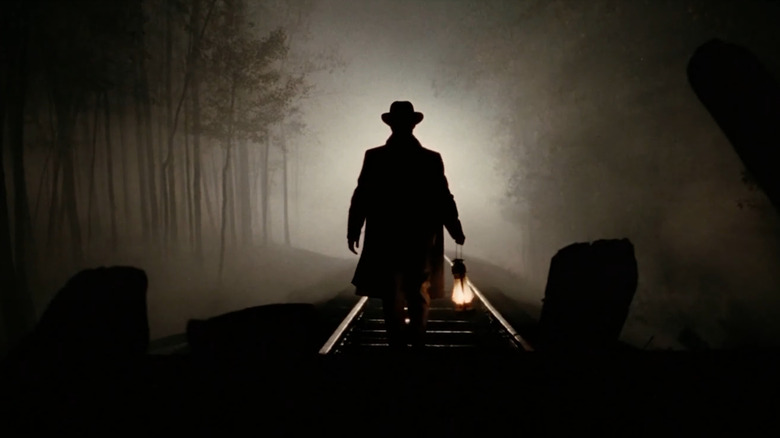Cinematographer Roger Deakins Wants Criterion To Recognize Assassination Of Jesse James
Roger Deakins is as celebrated as cinematographers come. His work on everything from "No Country For Old Men," to "Blade Runner 2049" has elevated him to a status few others in his field attain. The man can seemingly do no wrong — unless you're Quentin Tarantino, who's railed against digital cameras while Deakins has fully embraced them.
But among Deakins' seemingly endless triumphs of cinematography, there's one that remains somewhat of an outlier. 2007's "The Assassination of Jesse James by the Coward Robert Ford” is regarded by most who've seen it as one of the finest films of the 21st Century. Andrew Dominik's haunting, elegiac take on the Western sought to portray its titular character in a starkly unembellished way, so as to undermine the myth of him being a hero of the Old West. And Deakins' thoughtful and confident cinematography only helped to enhance the film's reflective tone.
Unfortunately, Warner Bros. was under the impression they were getting a shoot-em-up in the Clint Eastwood style, and weren't too impressed with Dominik's Malickian vision. That led to a protracted post-production on the movie, with the director initially delivering a cut that reportedly didn't test well. After Brad Pitt, who starred as James and produced on the project, Ridley Scott, and Spielberg's editor, Michael Kahn, all had a go, Warners eventually dumped the movie in five theaters before expanding it to 301 and ultimately seeing a disappointing box office return of $15 million — half the film's budget. Despite its box office failure, this 2 hour and 40 minute cut would garner widespread critical acclaim, and go on to be viewed as an under-appreciated modern classic. And Deakins, whose cinematography on the film was nominated for an Oscar, wouldn't mind seeing it get a little more respect.
The beauty of The Assassination Of Jesse James
Since "The Assassination of Jesse James" debuted in 2007, there's been a steadily growing appreciation for its contemplative beauty. Based on Ron Hansen's 1983 novel of the same title, the movie sees Brad Pitt and Casey Affleck deliver what are still considered career-best performances as James and Robert Ford, respectively. But it's arguably the movie's overall tone which is most affecting, making it one of the 21st Century's best films. Beginning with a train robbery that's depicted in an understated, dimly-lit style, the film maintains a constant awareness of the absolute connection between style and substance throughout.
Roger Deakins made heavy use of adapted Kinoptik lenses that gave the narrated scenes a distinct vignetting and an overall nostalgic, slightly warped feel. On his blog, the cinematographer detailed the finely-tuned lighting setups he devised for several scenes. Meanwhile, the magic-hour shots throughout only help to intensify the film's contemplative, mournful tone. The result is a striking yet subtly effective aesthetic, which perfectly compliments the sober retelling of James' death at the hands of his fellow gang member Ford.
Naturally, fans have since been eagerly anticipating a premium 4K release of the movie, which has yet to arrive. Even more have called for the film to be added to the Criterion Collection, including Deakins himself.
'It should be on Criterion'
Speaking to Collider at the 2019 Toronto International Film Festival, Roger Deakins revealed that he, too, believes "The Assassination of Jesse James" should be added to Criterion's library of classic films. Not only that, the industry veteran claimed he had seen some longer cuts of the movie, and would preferably like to see an extended version given the Criterion treatment:
"It should be [on Criterion]. I would really like to see the long version, the first cut that I saw, released on Criterion. That's what I'd hope for. [...] It was over three hours. I don't think it ever will, because last time I talked to Andrew [Dominik] about it he was quite happy with the version that got released. But I still remember that first early cut that I saw that was like three and a quarter I think, and it was pretty stunning. There was a four-hour version. The first cut was like four hours, I seem to remember."
As of yet, there's no news on whether the film will make it into the hallowed Criterion library. But if it does, it probably won't be a four-hour version. In fact, Andrew Dominik says there is a longer, better cut, but never one that ran four hours. Speaking to Collider two years after Deakins' comments at the Toronto festival, the "Blonde" director revealed that Warner Bros. wouldn't allow a longer version to be released despite his best efforts, and that even Criterion "were not interested in 'Jesse James.'" The director also clarified the situation with the various cuts of the film:
"There is a better version of 'Jesse James' — in my opinion — that's about 15 minutes longer. And that's the one that Roger was talking about. He's never seen one that's longer than that."
The Assassination of Jesse James deserves Criterion
Interestingly, Andrew Dominik maintains that there was never a four-hour version of "The Assassination of Jesse James." But whatever the length, according to Casey Affleck, who spoke to Film School Rejects about the topic in 2013, the extended edits he had seen were "so good" and truly enhanced the film:
"It stops being a Western and suddenly changes, and the movie looks different, feels different, it's a different man, and there's a real passage of time. You see the growth of people and how they change, and I think the book and [Andrew Dominik's] script and the longer version of the movie got that."
With multiple cuts of the unique Western floating around in the two years between when "Jesse James" was shot and when it debuted, it's likely that a four-hour cut may well have been produced at some point. But it's kind of beside the point. Whether in its theatrical form or the extended version, the film, with its quiet beauty and Affleck and Brad Pitt delivering some of their best performances, quite clearly deserves at least a 4K release, if not a Criterion one. If the collection isn't about preserving films that are not only beautifully-made but have something to say, then what is it for?



